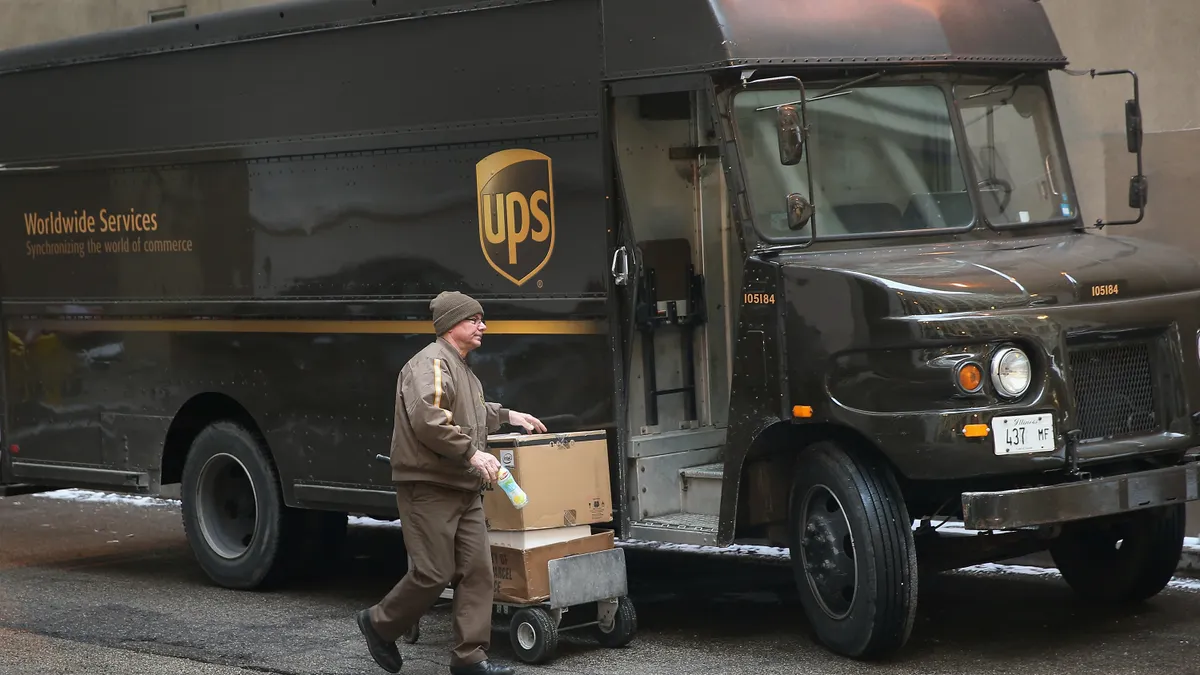UPS and the International Brotherhood of Teamsters have reached a tentative agreement on a new five-year national contract.
The Teamsters said in an announcement Tuesday that the deal “raises wages for all workers, creates more full-time jobs, and includes dozens of workplace protections and improvements.” Its negotiating committee unanimously endorsed the agreement.
“UPS has put $30 billion in new money on the table as a direct result of these negotiations,” Teamsters General President Sean O’Brien said in a statement. “We’ve changed the game, battling it out day and night to make sure our members won an agreement that pays strong wages, rewards their labor, and doesn’t require a single concession.”
The tentative deal is a welcome development for the shippers relying on the roughly 330,000 Teamsters-represented UPS employees to deliver millions of packages every day. Concerns of a strike starting Aug. 1 escalated in recent weeks as the two sides struggled to reach an agreement on economic topics like pay and benefits.
“Together we reached a win-win-win agreement on the issues that are important to Teamsters leadership, our employees and to UPS and our customers,” said Carol Tomé, UPS CEO, in a statement. “This agreement continues to reward UPS’s full- and part-time employees with industry-leading pay and benefits while retaining the flexibility we need to stay competitive, serve our customers and keep our business strong.”
The handshake agreement is a major step toward UPS averting a work stoppage, but the bargaining process isn’t over yet.
Next, the union will present the agreement to UPS employees they represent for review and voting. Their membership is able to vote on the national master agreement and regional supplemental contracts that cover their employment, according to UPS. To be ratified and implemented, each agreement — from the national master contract deal to supplementals — requires a majority to vote “yes.”
The tentative agreement comes after the Teamsters began pushing UPS for more favorable terms on economic items in late June. O’Brien said a strike appeared “inevitable” and the union repeatedly called on the company to present its best and final offer.
While UPS’ June 30 offer didn’t meet all the Teamsters demands, there was enough movement on the company’s side for the union to reengage in negotiations.
The two sides made quick progress in talks shortly after that. They reached tentative agreements on three major economic topics on July 1, including the elimination of the “22.4” combination class of drivers. The union has said this separate classification created two unequal employee tiers.
But then, a significant roadblock emerged in differences over part-time employee wages. The Teamsters alleged UPS walked away from the bargaining table on the early morning of July 5, while the company said the union refused to negotiate further. Negotiators returned to contract discussions on July 25, and eventually they reached a deal on remaining topics.
The next step is for the tentative agreement to be ratified by union membership. Although Teamsters negotiators liked the deal enough to present it to the rank-and-file, contract ratification in general is “extremely difficult these days,” said Art Wheaton, director of labor studies at Cornell University’s School of Industrial and Labor Relations, in a recent interview. For example, pilots at UPS rival FedEx rejected a tentative contract on July 24, sending negotiators back to the bargaining table.
Health and safety risks endured during the pandemic's heyday and more recent inflationary pressures have union members calling for deals that reflect their sacrifices and the current economic environment, Wheaton said.
"You've seen the cost of living skyrocket for a lot of different people, and if the contract language doesn't give them a huge raise, they will say, 'Well, why did you agree to this? You need to give us more money,'" Wheaton said.
This is a developing story and will be updated.














